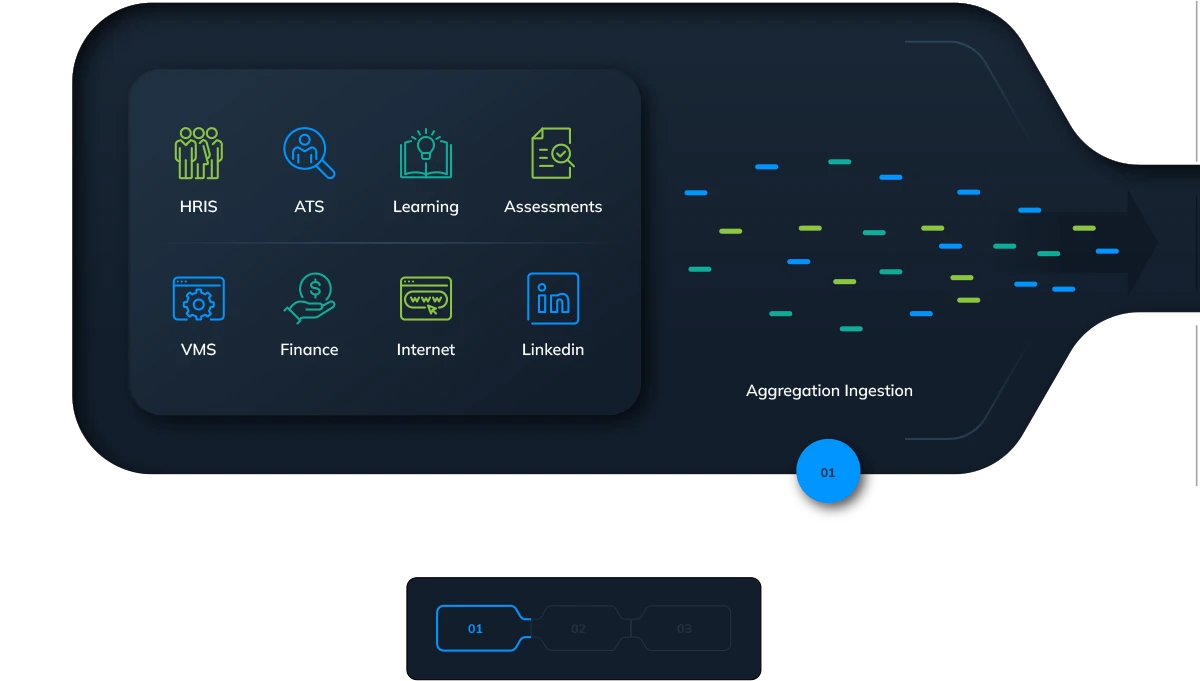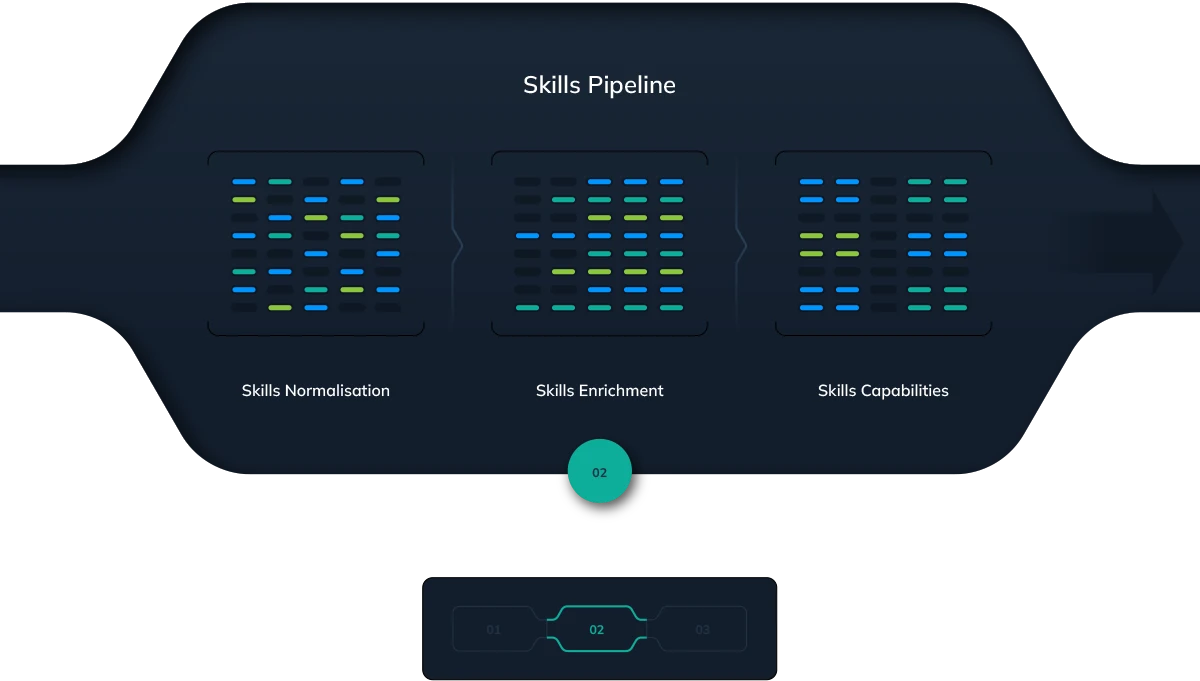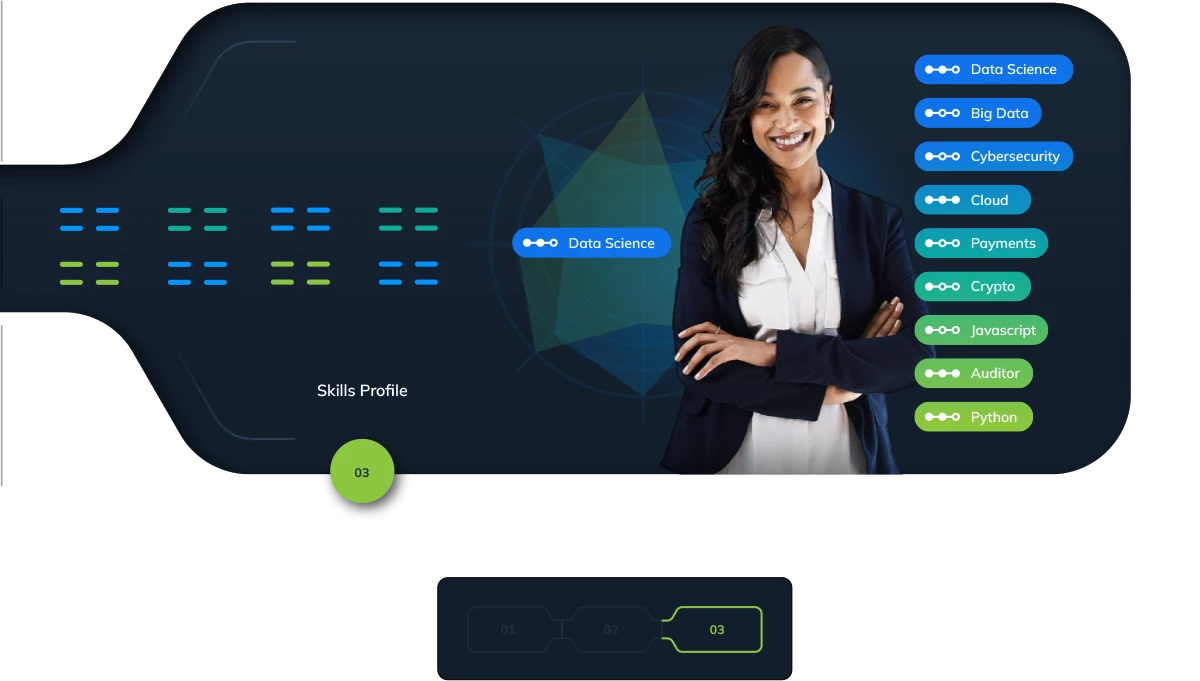AI Skills Intelligence
ProFinda’s AI Skills intelligence enables organizations to understand, map and deploy skills operationally, to drive productivity across the business
ProFinda uniquely uses the world’s most powerful and sophisticated skills ontology
Boasting 98%+ skills coverage, it is unrivalled in speed, accuracy and operational value
What are the typical challenges with skills?


The great hunt for skills data
Skills data is usually scattered across systems, without a common language. In that format, skills are not an operationally useful construct.
ProFinda’s skills intelligence is here to help!
One of the most ambitious undertakings of its kind, ProFinda’s skills intelligence is built on billions of data points and is constantly evolving with the changing world of work. At the heart of the skills intelligence, a skills ontology and career graph model the universe of occupations, roles, capabilities, skills and how everything varies by time, industry and geography
ProFinda builds skills intelligence you can use
Profinda aggregates data from multiple sources; creates a skills lingua franca, and enriches and organises the data into a skills profile for every employee



Poor Skills Data
Better Skills Data
Skills intelligence is the solution
Aggregate all skills together in a single place.
Build Skills lingua franca. Connections and proximity between skills. Enrich skills and enhance.
Organize and categorise into meaningful groups used to make supply & demand consistent
What are the benefits of this approach?

What does this mean in practice for your organization?
Being able to operate at a much more granular level of skills – what we call “atomic skills”, allows far more effective resourcing. This means understanding skills at a project level, rather than a job level. With the ability to search and match atomic skills globally, the global operating model becomes far more fluid & dynamic. People are able to develop the right skills at the right time, get matched to projects rapidly, and the basis of a skills-driven organization is formed. Becoming skills-driven means higher utilization, lower attrition, and the ability to intelligently deploy the workforce, at scale.
Build a skills-based organization, with atomic skills data powering project delivery
Managing demands at the Atomic level of skills (e.g. Java), with a focus on functional deployment and projects. Baseline to inform HR & agile SWP.
Accurate view of skills you have based on what you do vs. what you were hired to do. Automated based on project data feedback loop within the tool e.g. skills verification / experience / skill gap to project.
Bring together supply & demand skills to set expectations and goals for upskilling / reskilling. Focus on the strategic project need of skills and learning ‘in the flow of work’ vs. HR job ladders.

